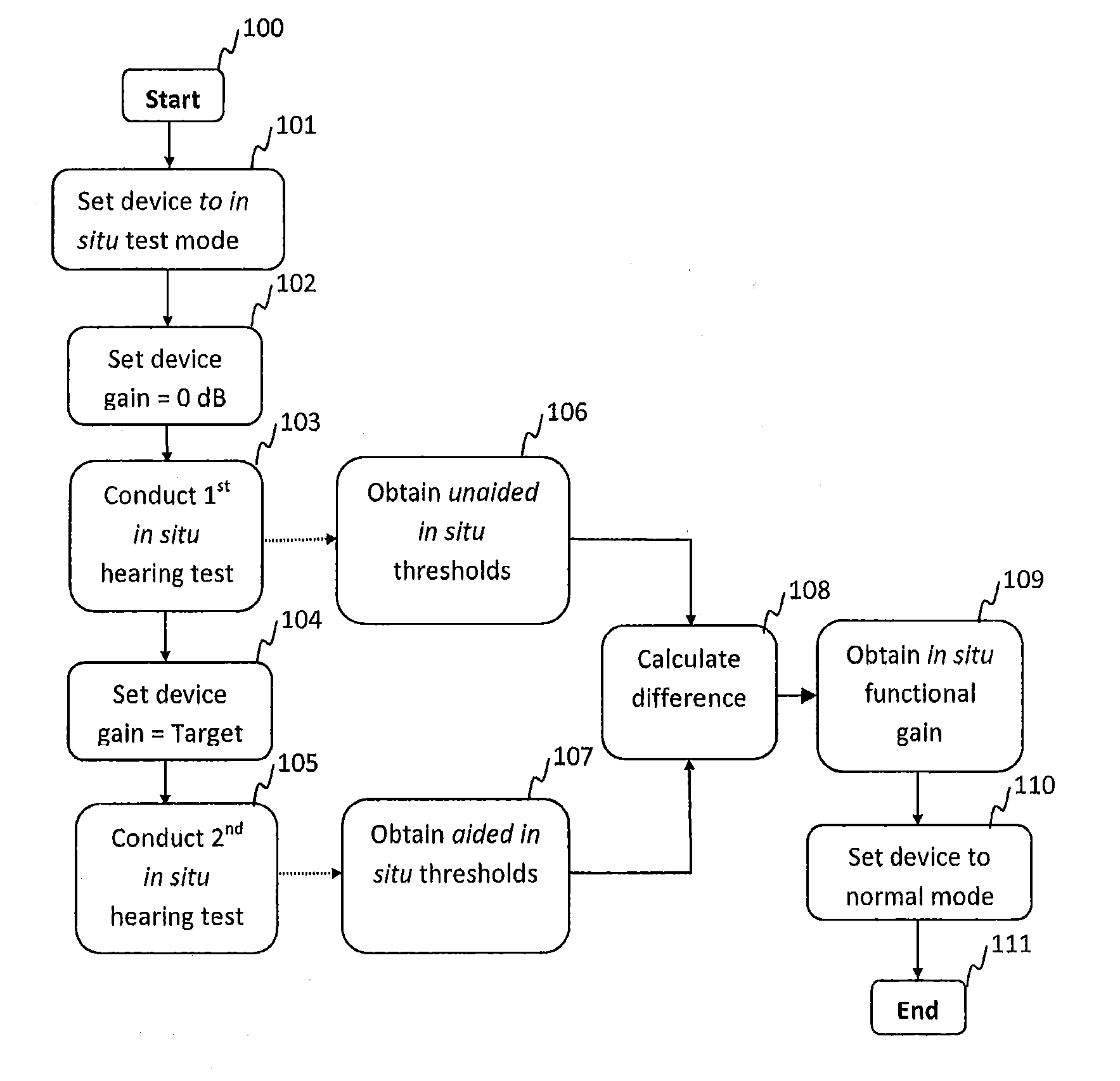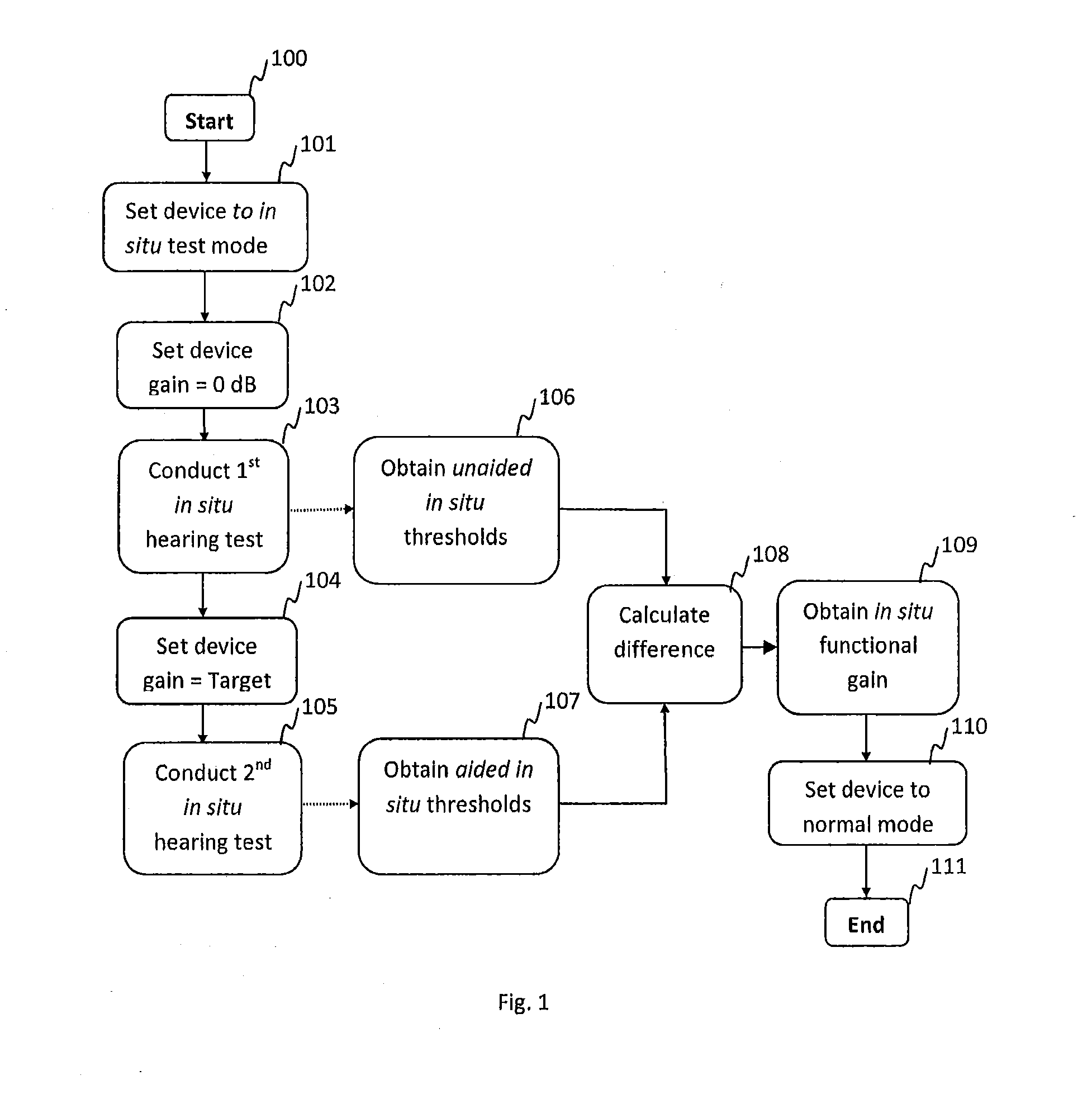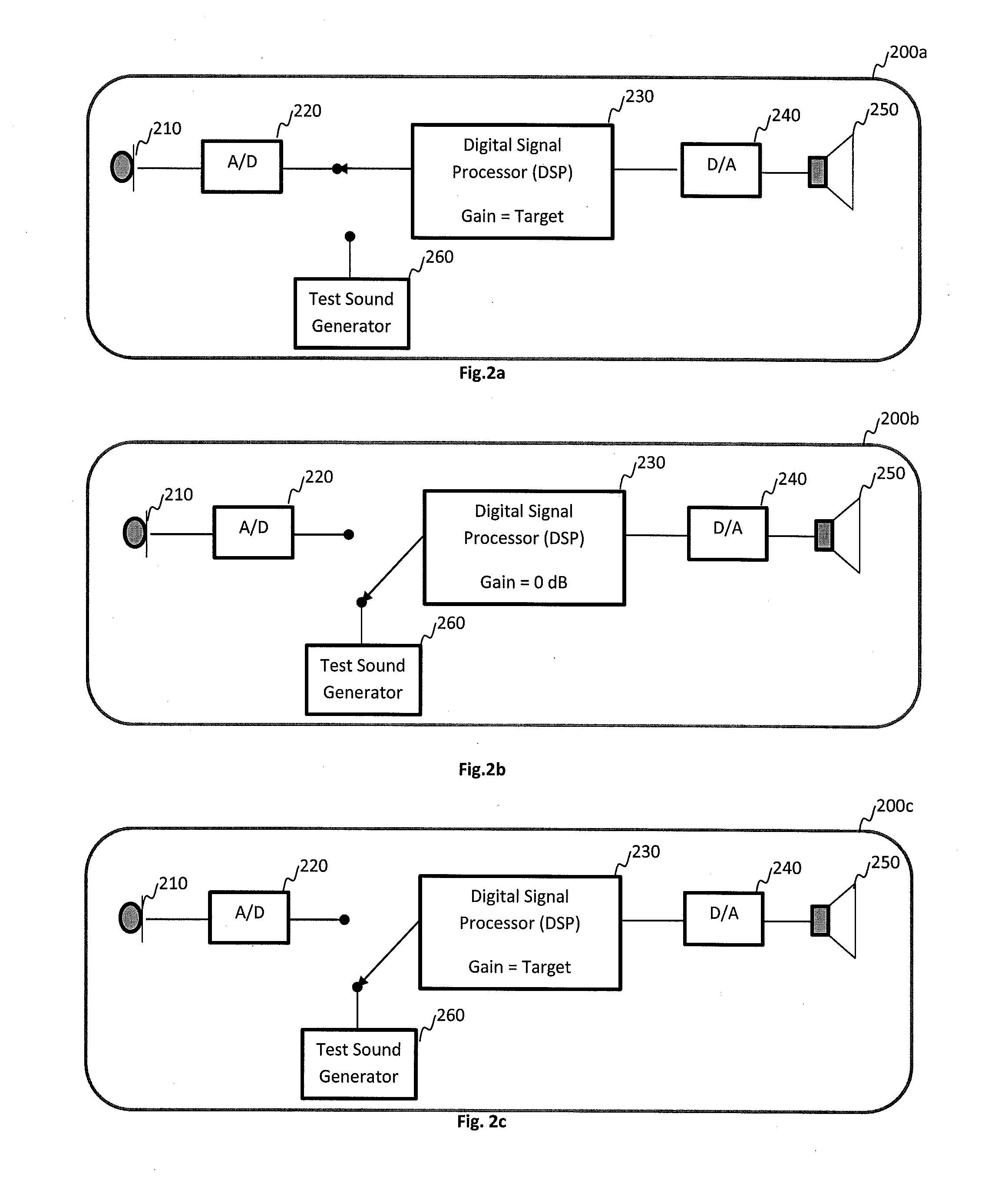Fitting verification with in situ hearing test
a technology of in situ hearing test and fitting verification, which is applied in the direction of deaf-aid sets, electrical equipment, deaf-aid adaptation, etc., can solve the problems of inconvenient testing, affecting the consistency of test results, and high cost of equipment for real ear measuremen
- Summary
- Abstract
- Description
- Claims
- Application Information
AI Technical Summary
Benefits of technology
Problems solved by technology
Method used
Image
Examples
Embodiment Construction
[0017]The invention relates to hearing device fitting. More specifically, it relates to methods for fitting evaluations and verifications. The method can be implemented as a software program in a computing platform such as a computer, smartphone, or a designated control system for a hearing device. The invention will be readily understood by the following detailed description in conjunction with the accompanying drawings which form part of specific embodiments.
[0018]The standard equipment for fitting a hearing device to a patient includes a computing platform such as a computer or smartphone, a programming interface, and the hearing device itself. Technologies are also available to integrate the programming interface with the computing platform to make it possible for the computing platform to communicate to the hearing device directly. For example, a Bluetooth enabled computer can communicate with a Bluetooth enabled hearing device directly without a separate programming interface....
PUM
 Login to View More
Login to View More Abstract
Description
Claims
Application Information
 Login to View More
Login to View More - R&D
- Intellectual Property
- Life Sciences
- Materials
- Tech Scout
- Unparalleled Data Quality
- Higher Quality Content
- 60% Fewer Hallucinations
Browse by: Latest US Patents, China's latest patents, Technical Efficacy Thesaurus, Application Domain, Technology Topic, Popular Technical Reports.
© 2025 PatSnap. All rights reserved.Legal|Privacy policy|Modern Slavery Act Transparency Statement|Sitemap|About US| Contact US: help@patsnap.com



